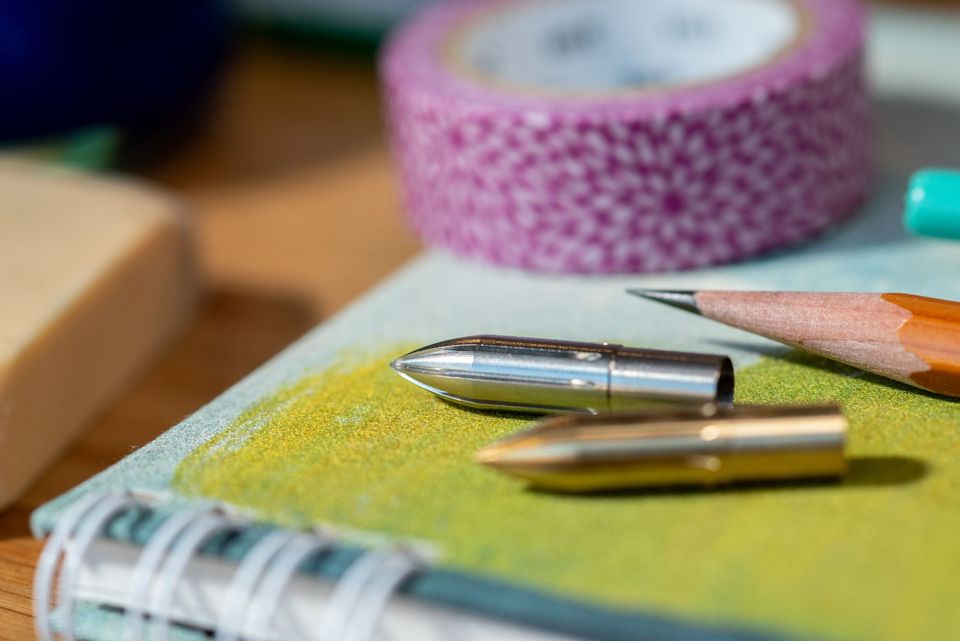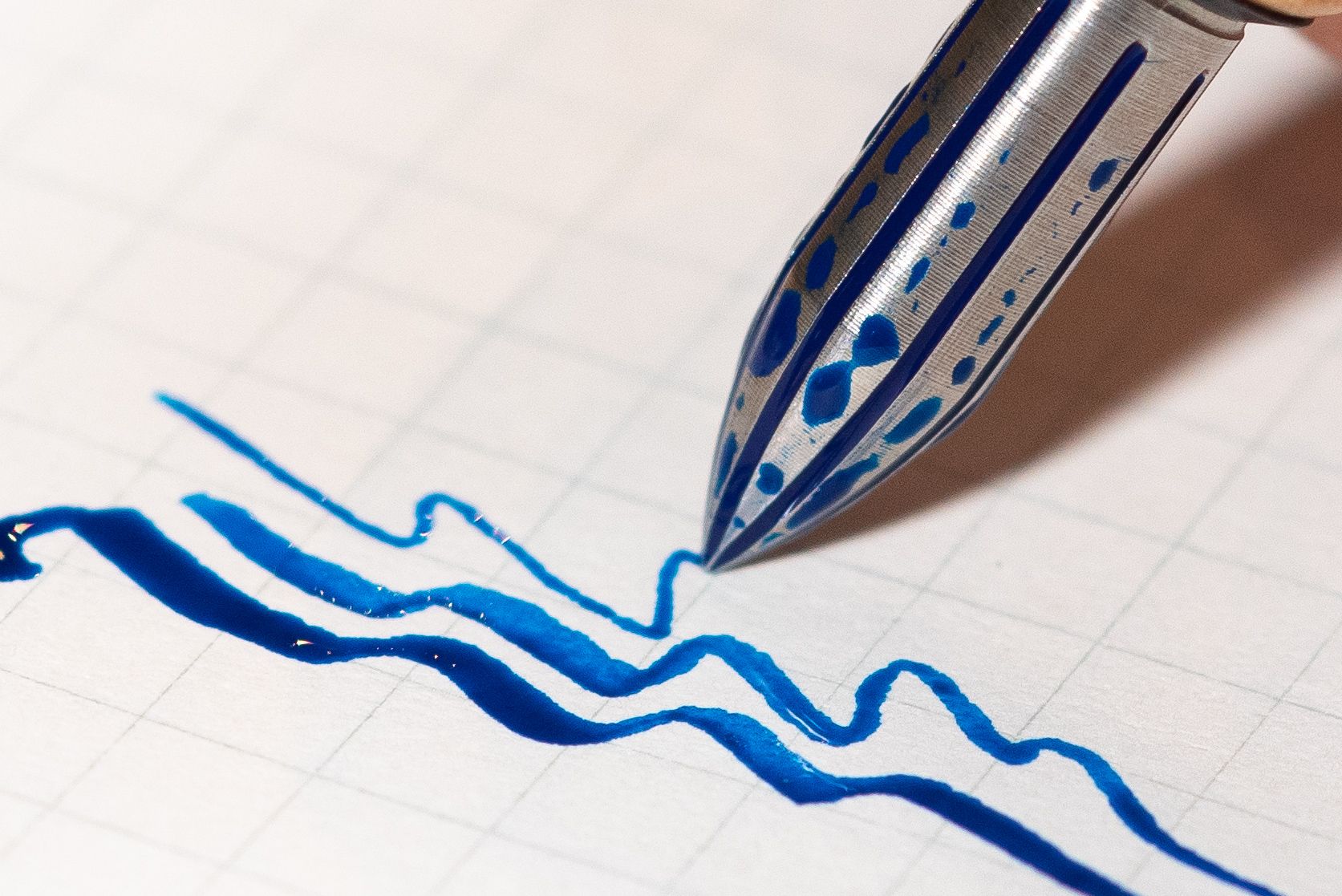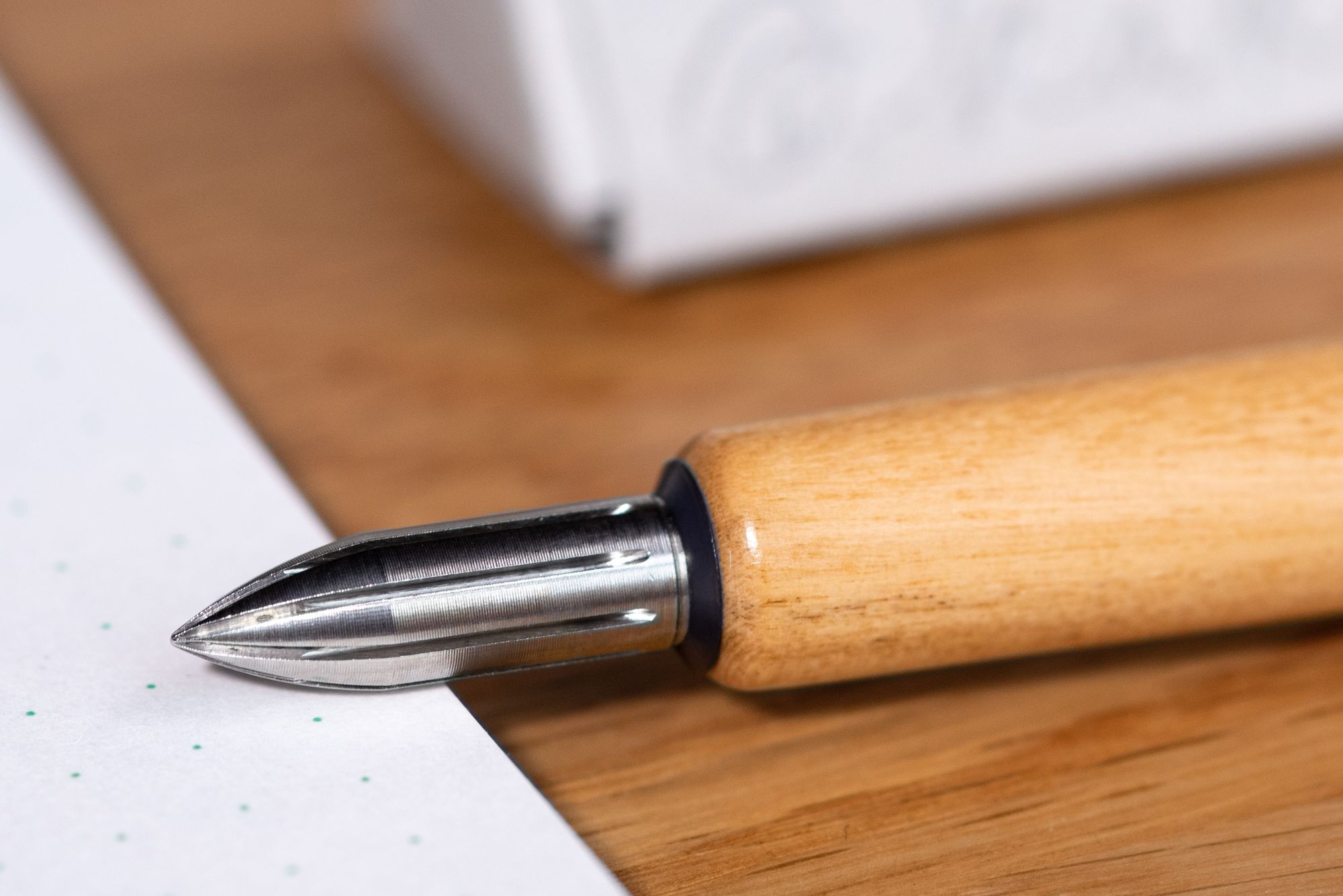Product Test: Kakimori Stainless Steel Nib

When we first ordered these innovative dip pen nibs for the shop, I assumed the Kakimori Brass Nib would be my favorite. The Brass Nib is smoother than the Stainless Steel Nib, and who doesn't like smooth? I personally tend to use broader fountain pen nibs because I like expressive, flowing lines. So, to be honest, I was a bit dismissive of the stainless steel option—despite its great looks and construction.

But we put both nibs to the test anyway, and I have to admit I was wrong. The stainless nib definitely has more feedback on paper, so it doesn't glide as quickly as the brass nib. But the stainless nib is just easier to use, with its slower action keeping stray lines in check and its finer point providing greater control over your work.
By the way, this is still an astonishingly smooth dip pen! The brass nib remains the Smoothness Champ, but the stainless nib remains much smoother and simpler to operate than other metal dip pens. It easily writes in all directions, unlike fountain pens and traditional dip pens, which can snag on the upstroke.

And, like the brass dip pen, Kakimori's stainless nib offers a great variety of line widths and shapes. The wedge-shaped areas on the sides of the conical tip can become broad, expressive drawing surfaces—just angle the pen until you get the shape you're looking for. This nib can transition from fine, precise marks to larger fills than the widest of traditional nibs.

The real surprise, though, was the Stainless Steel Nib's outstanding performance as an everyday writing tool. Other dip pens need to be re-inked every few words, but we wrote an entire 5" x 7" notebook page on a single dip in Kakimori Pigment Ink.
That huge ink capacity, coupled with the Stainless Steel Nib's precise point and drip-free design, make this the very first dip pen we'd recommend for ordinary uses like journaling and everyday correspondence. It feels like a treat, rather than a hassle, to fill in a planner page with a Kakimori nib.

Of course, as an art supply store, we have to consider the drawing possibilities, too! Curt drew a quick portrait sketch with the Stainless Steel Nib and some Saiboku Aya colored sumi ink, and we were impressed with the results. As you can see in the close-up photo above, Curt was able to draw very fine lines but also use the nib like a brush to fill in larger areas.
For drawing, it's also a big advantage to avoid constant re-inking. The Stainless Steel Nib lets out ink more slowly than the Brass Nib, so it lasts longer between dips and offers a consistent flow rate, from nearly full to nearly empty.

Overall, we can definitely give the Stainless Steel Nib an enthusiastic recommendation. It's easy to use, but it offers a lot of rewards if you use it habitually and get comfortable with everything it can do. It's precise but still quite smooth. And like its sister, the Brass Nib, the Stainless Steel Nib is superbly designed and executed—for a lifetime of creative use.